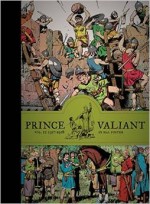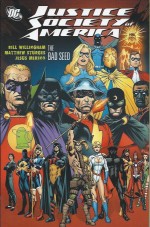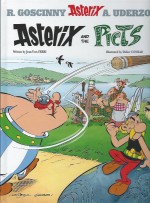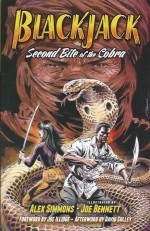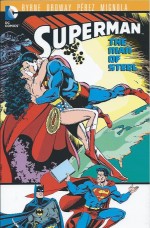
By John Byrne, Roger Stern, Jerry Ordway, George Pérez, Ross Andru, Mike Mignola, Curt Swan, Kurt Schaffenberger & various (DC Comics)
ISBN: 978-1-4012-4391-3
Although largely out of favour these days as many decades of Superman mythology are relentlessly assimilated into one overarching, all-inclusive multi-media franchise, the stripped-down, gritty, post-Crisis on Infinite Earths Action Ace as re-imagined by John Byrne and built upon by a stunning succession of gifted comics craftsmen produced many genuine comics classics.
Controversial at the start, Byrne’s reboot of the world’s first superhero was rapidly acknowledged as a solid hit and the collaborative teams who complemented and followed him maintained the high quality, ensuring continued success.
That vast, interlocking saga is being collected – far too slowly – in a more-or-less chronological combination format as fabulously economical trade paperbacks and Superman: The Man of Steel is the eighth volume (revisiting Superman #16-18, Adventures of Superman #439-440 and Action Comics #598-600, covering March to June 1988).
The Fights ‘n’ Tights frenzy begins with the debut of DC’s signature super-spy outfit ‘Checkmate!’ (Action Comics #598, courtesy of Byrne, Paul Kupperberg and inker Ty Templeton) wherein Lois Lane faces an Arab terrorist hiding behind diplomatic immunity whilst the Caped Kryptonian is handling the capture of a US nuclear aircraft carrier.
Luckily an enigmatic masked “Knight†in black and gold is working behind the scenes to stop the plot but can even he prevent atomic Armageddon?
Over in Superman #16 (Byrne & Karl Kesel), Metropolis is plagued by crazy, life-threatening stunts whilst Morgan Edge‘s TV station is held hostage by disgruntled employee “Uncle†Oswald Loomis. The wily old entertainer is bemoaning changing tastes and times in ‘He Only Laughs When I Hurt!’ but taking Lois prisoner is no way to put his point across. However this very modern Prankster has more than gimmicks up his sleeve to counter the Man of Action’s swift response…
And in Antarctica polar scientists make an incredible discovery…
In Adventures of Superman #439 (Byrne, Jerry Ordway & John Beatty), Jimmy Olsen and Cat Grant stumble upon a hidden paramilitary encampment with enough power to cripple the Man of Steel, but when the wounded hero crashes down in Metropolis the doctors treating him can only diagnose that he has been turned into a robot…
The incredible truth behind the impossible situation and the ‘Tin Soldiers’ comes quickly, but not quite in time for the captive reporters, after which evil entrepreneur Lex Luthor returns to bedevil Superman by turning the multifaceted, malleable Metal Men into a lethal weapon composed of ‘Element 126’: a snappy thriller written and inked by Byrne – with the assistance of Keith Williams – and pencilled by legendary illustrator Ross Andru, first seen in Action Comics #599…
Superman #17 then revealed the return of murderous mystic Silver Banshee, still searching for a lost tome of lore and making corpses in the all-Byrne ‘Cries in the Night’. Once again outmatched and at a loss for answers, this time the Metropolis Marvel is saved by a hulking and equally enigmatic Scot named Bevan McDougal who only leaves the hero with more questions…
Answer to the robotic replacements incursion comes as maverick inventor Professor Emil Hamilton returns in Adventures of Superman #440 (scripted by Byrne, illustrated by Ordway & Dennis Janke Beatty) but he finds the Man of Tomorrow positively giddy at the prospect of meeting again the fascinating heroic newcomer Diana of Themyscira.
A semblance of professionalism only resumes after Superman consults with the grim Batman in Gotham City who has been trying to track down the owner of a certain scrapbook which seems to hold all the secrets of the Kryptonian’s childhood. The eventual answer is a breathtaking shock in ‘The Hurrieder I Go’…
Meanwhile in Metropolis Luthor gloats after his spies bring him enough dirt to finally bring incorruptible Police Captain Maggie Sawyer under his merciless heel…
May 1988 was the fiftieth anniversary of Superman and to celebrate Action Comics #600 was an all-new 80-page carnival of delights from a host of creators. Variant covers and pin-ups by Linda Medley, Art Adams, John Bogdanove, Kevin Maguire, Dave Gibbons, Mike Zeck and Walt Simonson accompanied spectacular lead story ‘Different Worlds’ (Byrne & George Pérez) which at last addressed the obvious chemistry between Superman and Wonder Woman, before the couple are drawn to Olympus in ‘Fallen Idols’. Finding the home of the gods conquered by Darkseid in ‘Broken Mirrors’, the resulting cataclysmic ‘Battle!’ only ends with the New God again tasting defeat in ‘This Hollow Victory…’
The rest of the captivating regular cast also get time to shine. Lois proves her independence and gains new respect for Clark after learning of glamorous Kal-El and Princess Diana’s supposed ‘True Love’ in a pithy yarn written by Byrne and Roger Stern with art from veteran illustrator Kurt Schaffenberger, inked by Ordway.
Byrne & Dick Giordano then brought the war of wills between Maggie Sawyer and Luthor to a head in ‘Games People Play’, but not in a way the multi-billionaire would have wanted, whilst Jimmy was ‘A Friend in Need’ (Byrne, Stern, Curt Swan & Murphy Anderson) when a strange malady almost killed his caped pal, dragging the hurt hero deep into the earth where tragic antihero Man-Bat found him delirious in ‘The Dark Where Madness Lies’ from Byrne & Mike Mignola…
This splendid repository of collected comic delights concludes with the magnificent resolution as Superman #18 reveals that the radiation wave-front from the hero’s long exploded birthworld has finally reached his adoptive home. With the aid of alien émigrés Hawkman and Hawkwoman the incapacitated cosmic orphan undertakes a ‘Return to Krypton’ (courtesy, of Byrne, Mignola & Kesel) to experience cosmic wonders and astounding visions of terrifying clarity…
To Be Continued…
The back-to-basics approach lured many readers to – and most crucially back to – the Superman franchise at a time when interest in the character had slumped to perilous levels, but it was the sheer quality of the stories and art which made them stay.
Such cracking superhero tales are a true high point in the Man of Tomorrow’s monolithic canon and these astoundingly readable collections are certainly the easiest way to enjoy a stand-out reinvention of the ultimate comic-book icon.
© 1988, 2014 DC Comics. All Rights Reserved.

